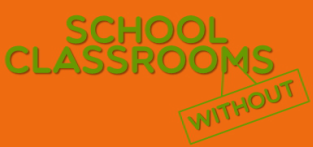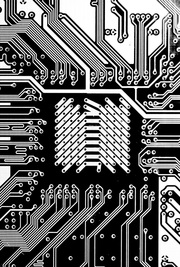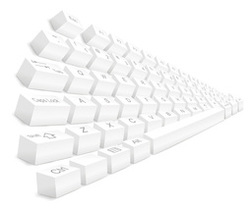Information and communication technology
Use of technology in itself does not ensure effective teaching or learning, but it can extend the reach and flexibility of what the institution offers.
Display technologies are now widely available in teaching spaces. Audiovisual technologies and wireless networking is ubiquitous in many schools. We envisage a comprehensive range of technologies in our school model: video streaming, audio zoning, mobile interactive whiteboards with projection facilities, video conferencing, wireless networking, tablet PC banks, magnetic work walls, a personal response system, voting devices and recording facilities. Every item in the space is on wheels, from the interactive whiteboard to the tables – this means the rooms can be quickly emptied and reconfigured. Activities can then be captured on video and uploaded to a website or the virtual learning environment for further analysis. Wireless networking, which is a ubiquitous feature nowadays, provides our learning space with the necessary flexibility to achieve the pedagogic goals, because it supports a wider variety of pedagogic approaches, and allows multi-purpose usage of our learning spaces.
We have provided interactive or conventional whiteboards mounted on the wall behind the main speaker, ceiling-mounted projectors with cabling to a laptop, a wireless network and/or wired computers. A 21st century school needs to perform assessment rapidly and accurately. We provide an electronic voting system to help students test their understanding of concepts in response to multiple choice questions, and collaborative discussion before and after voting is an integral pedagogic approach.
To ensure sustainability of our model, we have provisioned CCTV cameras, showing how spaces are used and to record the extent to which rooms are occupied can offer cost savings in the long run. A central online booking system increases the effectiveness in managing space utilization. These cameras can capture demonstrations by experts for later replaying, and can also record the level of the learner’s achievement for e-assessment. In many simulation environments, video cameras are also a teaching aid, used to record performances in tasks, so that techniques and skills can be improved. An example is the assessment of speaking skills of students – playing back one’s speaking a foreign language is a powerful teaching tool. |
We provide tutors with wireless-enabled tablet PCs for e-registration which ensures attendance data is fed immediately into central records, provide the tutor on the move with a tool for preparation, and give both learners and tutors access to resources during the session – from any part of the space.
The central atrium can provide space for displays of learners’ achievements in a variety of media, including broadcast media. Its public nature and architectural and acoustic features provide an ideal setting for events relating to performing arts, music, media studies and fine art courses or celebrations in the school calendar – open days, awards ceremonies and end of term events. The role of the central position of the atrium after the entrance is vital. It forms the heart of the institution, and establishes a sense of unity, a culture of learning, support and professionalism, which reflects our vision of a modern school environment. The design promotes access for all, and is highly flexible – based around a central core, it can be altered to support different kinds of activity. The mix of learners and staff working within the atrium establishes it as a purposeful meeting place, designed to encourage and support learning. Our aim is to facilitate active learning and our interior design promotes this approach. The design of most general learning spaces supports both tutor-led and learner-led activities. These will include presentations, discussions, collaborative project work, and information retrieval and sharing. Teaching takes place in open-plan flexible learning centers.
Whenever the activity requires a wider audience, as is the case with a large group or a dispersed group, we have provided means for video streaming and video conferencing. The cameras in the teaching spaces offer this flexibility. The space of our school without classrooms can be booked for special events, such as whole-day workshops, when graphic artists and technical support teams can be called in to capture a record of the outcomes.
Our model establishes a learning environment, where individual, informal group and class-based teaching blend in one space, and software is used to link dispersed class members with their tutor. We apply modern technology to facilitate the application of Constructionism and project-based learning with the tutor becoming more of a facilitator of learning than an instructor and the environment becoming The Third Teacher. |
 |
|






